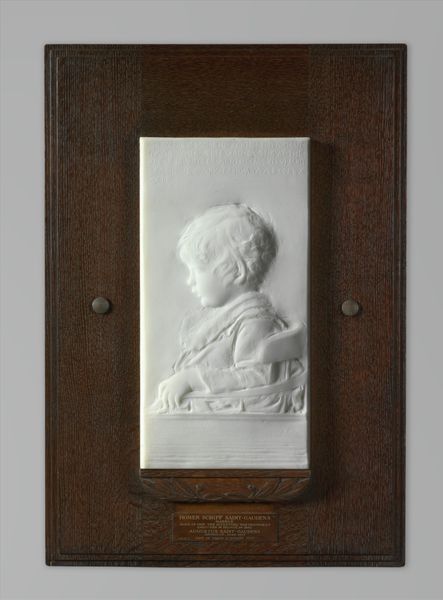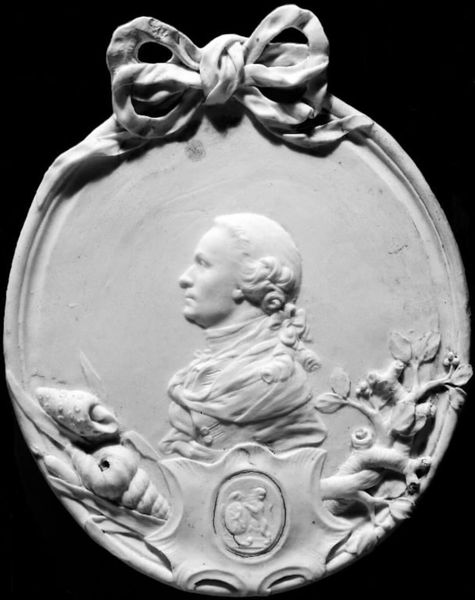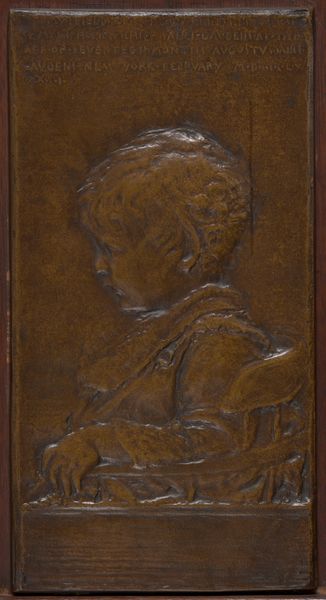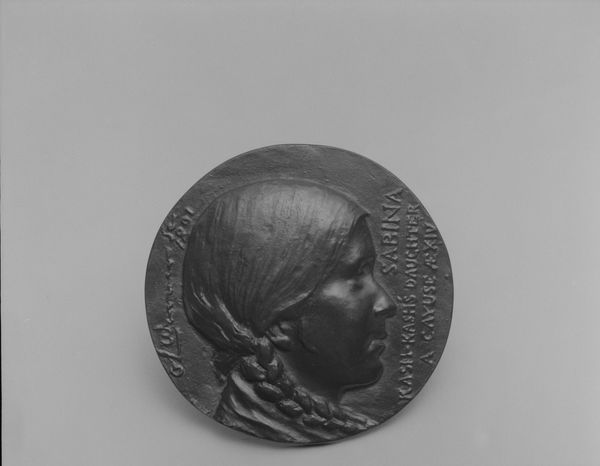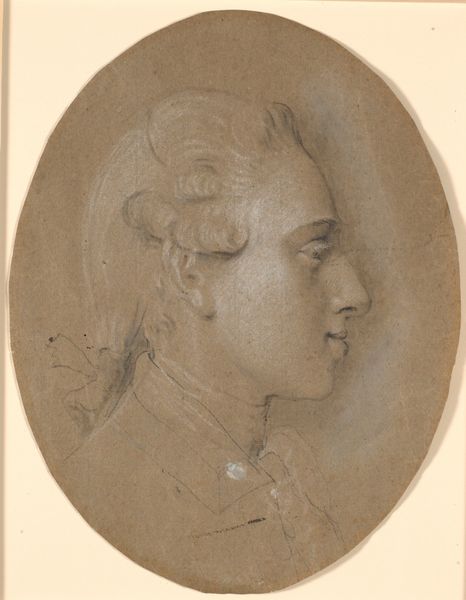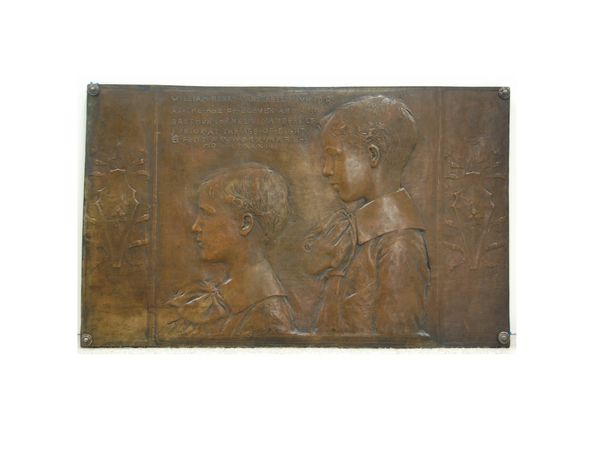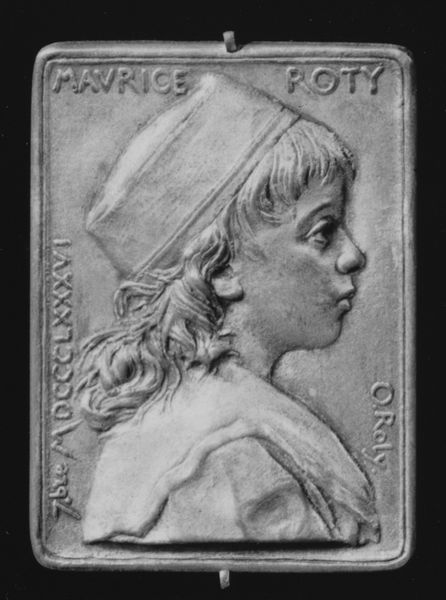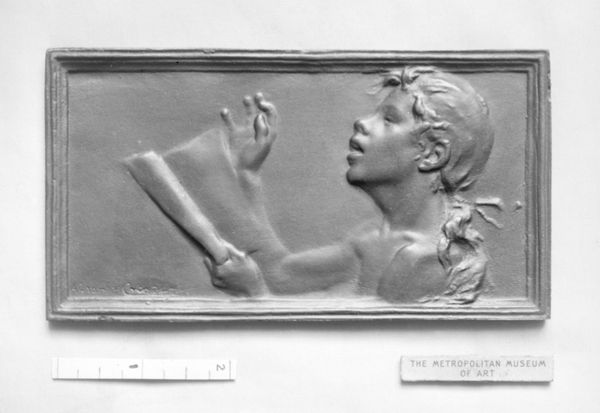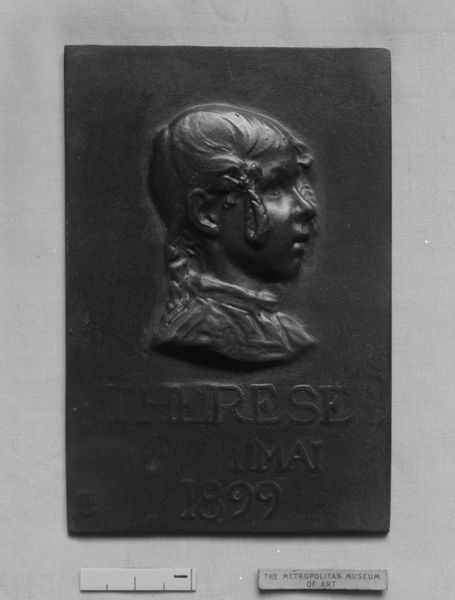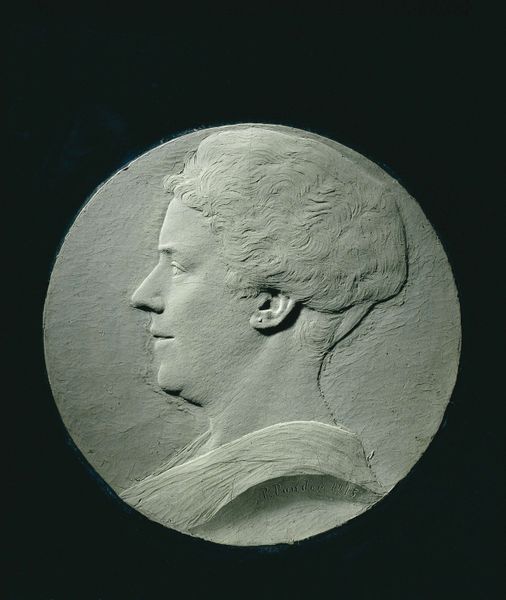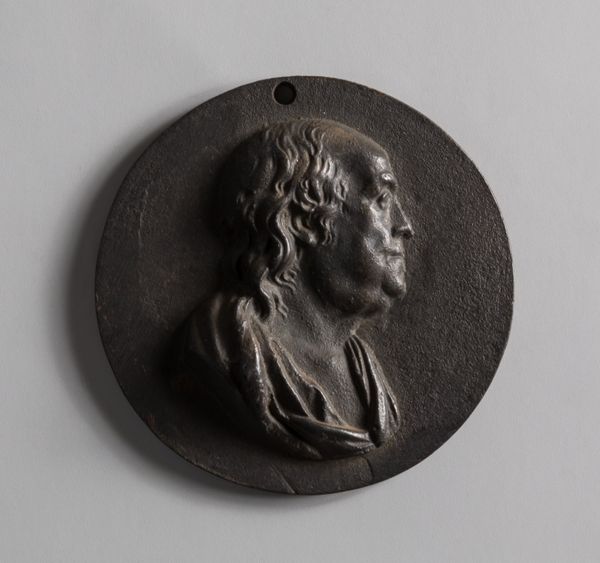
relief, sculpture
#
portrait
#
sculpture
#
relief
#
figuration
#
sculpture
Dimensions: 21 3/4 x 13 1/8 in. (55.2 x 33.3 cm)
Copyright: Public Domain
Curator: Standing before us is "Claerchen," a relief sculpture created in 1893 by Karl Theodore Bitter. The work, residing here at the Metropolitan Museum of Art, offers us a sensitive figural study in bas-relief. Editor: My first impression is one of wistful tenderness. The soft contours and muted tones give her a dreamy quality, like a half-remembered memory from childhood. Curator: It is rendered as a profile portrait, capturing a young girl looking to her left, with an introspective expression. Consider, how Bitter uses this artistic convention to project something beyond the individual—almost like a youthful muse, a representation of burgeoning womanhood. Editor: I can certainly see the resonance with classical ideals. But, to really understand this piece, we need to think about how class might intersect with these aesthetic choices. Who was "Claerchen"? Was she simply an idealized figure or does she embody specific aspirations or limitations based on her socio-economic status? Curator: That is astute, though in the absence of specific records it would remain speculative. Nonetheless, the artwork uses universally legible symbols that transcend cultural and socioeconomic factors, creating an archetype. It represents innocence, introspection, and potential—ideals celebrated across diverse cultures. Editor: But innocence itself is so often weaponized in social and political contexts! I am compelled to ask who possesses the authority to define and celebrate this "innocence," and for what ultimate purpose? How can this aesthetic of a child also reproduce cultural expectations around childhood naivete or feminine submission, expectations from which it may become difficult to later escape? Curator: A provocative point. And while those sociopolitical readings have their own truth value, I find I return to the more essential elements: light and shadow dance across her face and curls, creating a sense of ephemeral beauty, touching on universal notions of childhood's fleeting, unrepeatable experience. Editor: Ultimately, what endures is this tension between a child presented with a sort of universal aspiration for goodness and the way those images, like mirrors, reflect our society back at ourselves, with all our attending baggage. Curator: Exactly, and Bitter offers a starting point. From the individual portrait, he opens up a portal to wider symbolic considerations of cultural memory. Editor: He created, knowingly or not, a surface which remains unsettled by all who come to contemplate the face of "Claerchen," for she continues to reflect the viewer.
Comments
No comments
Be the first to comment and join the conversation on the ultimate creative platform.
